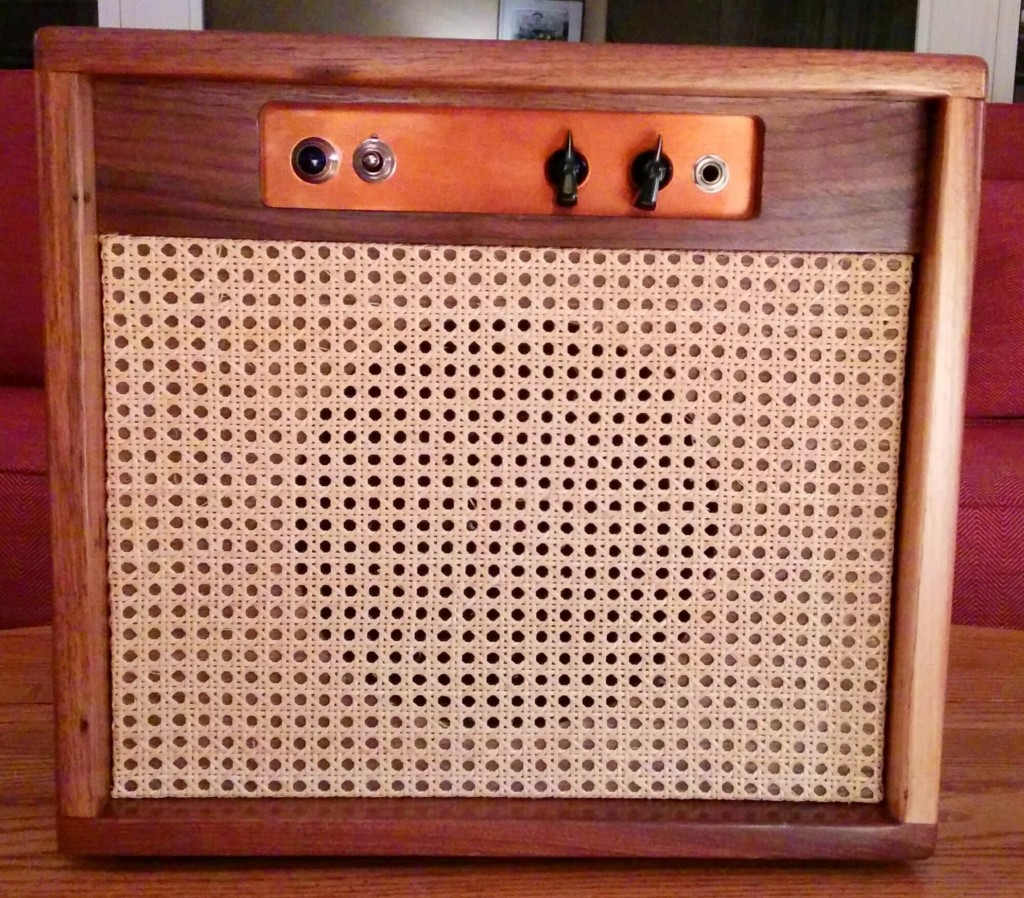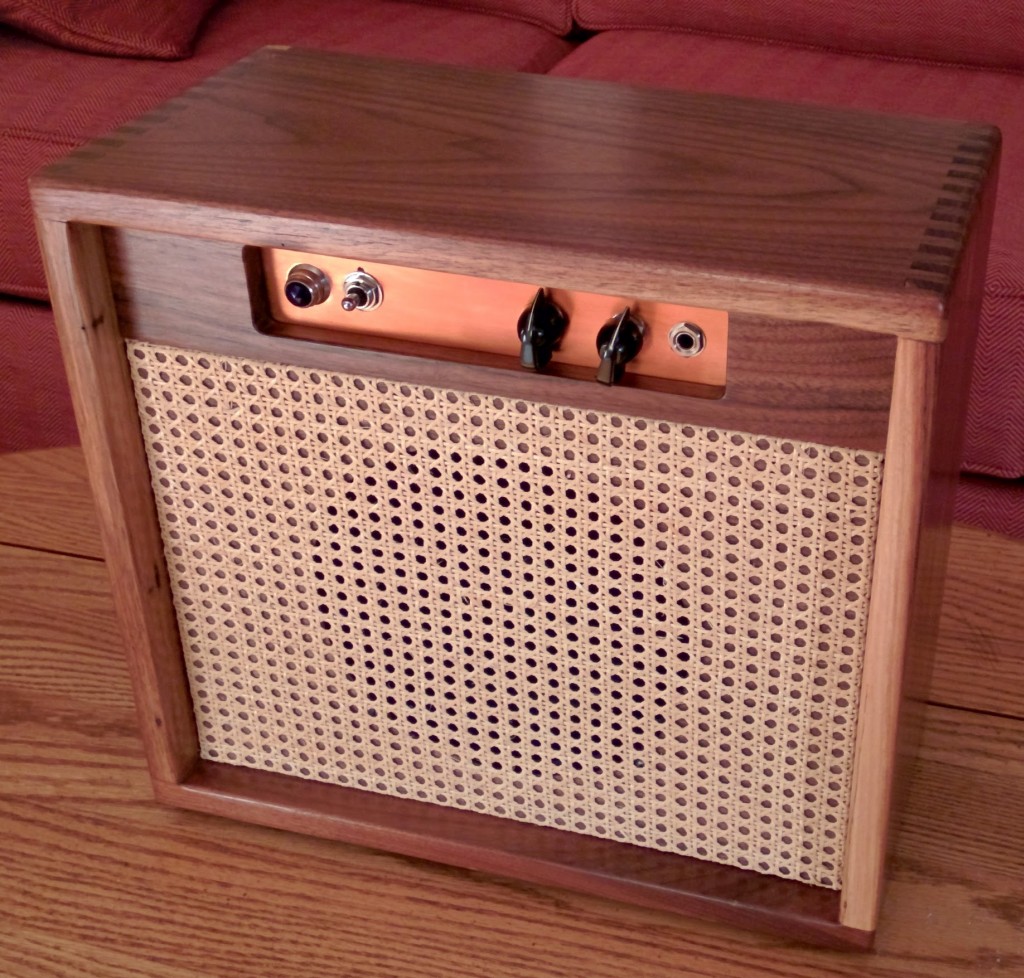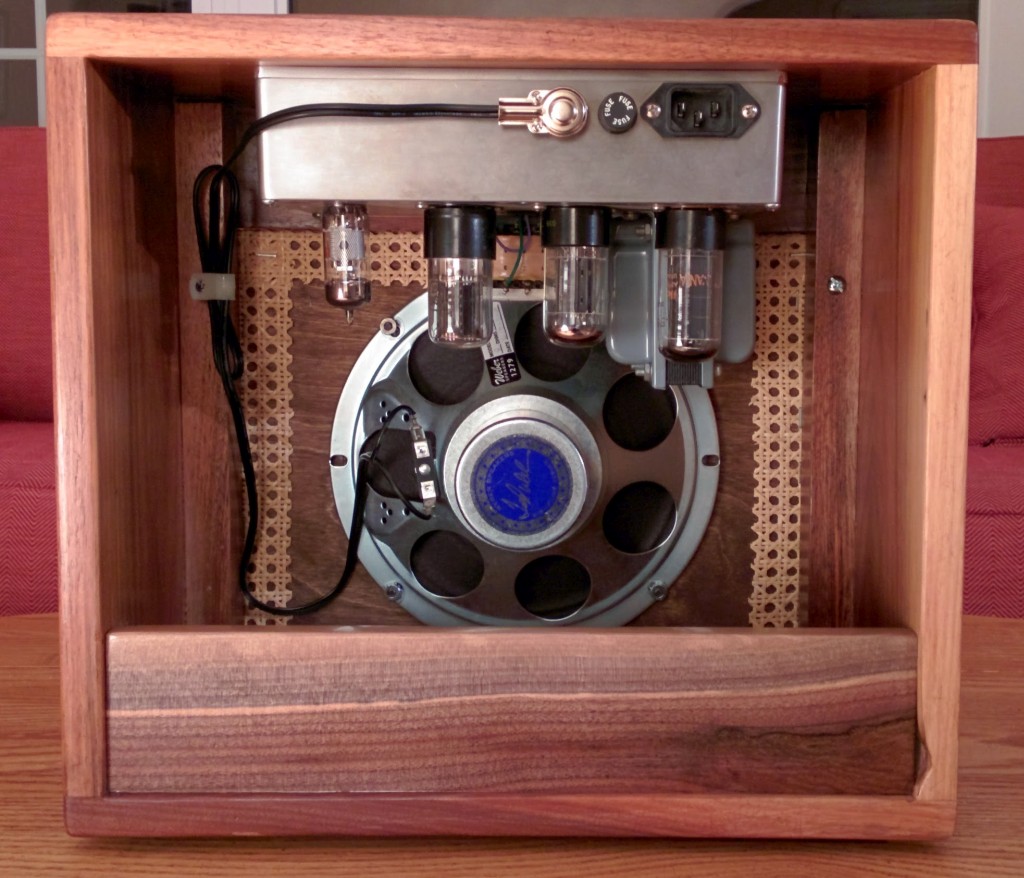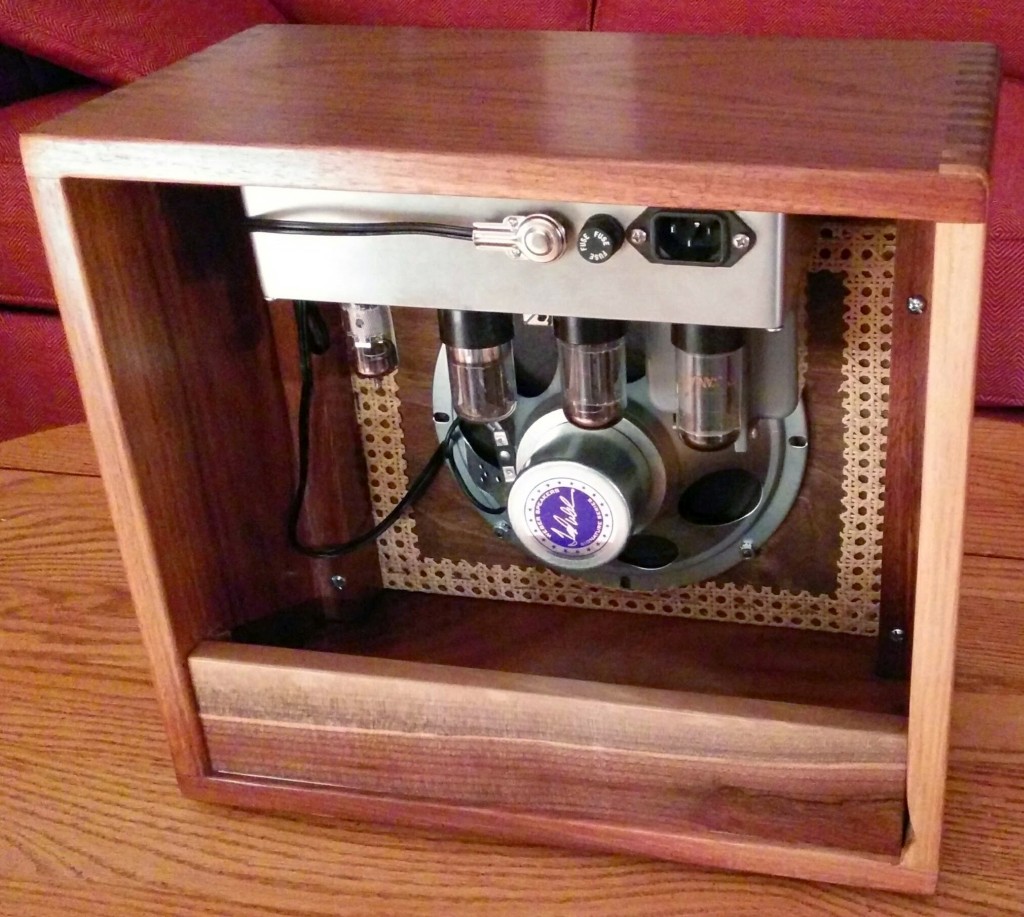Moonlight: 2W Vacuum Tube Guitar Amplifier
Walnut, Wicker, and Copper Tenth
Anniversary Edition
In 2009, my co-worker Gary bought a dovetail jig for his woodworking setup. For a shakedown run, he built me a box-jointed combo cabinet in black walnut. I made a speaker baffle from 3/8" baltic birch plywood, and bought a Weber 8" Signature Alnico speaker. I also bought some cane wicker for the speaker grill. Then the unfinished box and speaker baffle parts sat on various shelves for another 5 years waiting for a good time to round the edges, sand the box, apply finish, and assemble everything.
In late 2014, my boss Chris mentioned that he was in the market for a "one-hand low power tube amp" to play in the house, where his gigging amp would violate even his wife's prodigious tolerance for rock and roll. He asked me to check out a cheap Blackstar 1W tube amp that Guitar Center was offering. I told him to hold off on that, because I had all the parts for just what he needed.
Even better, Chris has decent woodworking skills. He agreed to sand and varnish the cabinet while I finished the baffle. We collaborated to work out the remaining assembly details. The remainder of this page documents some of those details, along with pictures of the completed amp.

Chris installed 4 x #8 brass screw inserts into the inside top of the cabinet. The inserts were aligned to screw bosses in each corner of the chassis. He enlarged the hole of each boss for a #8 machine screw, which fastens the chassis to the cabinet.
Chris executed several nice finishing touches. He fabricated a copper faceplate to cover the front panel, then flame-toned the faceplate with a torch and clear-coated it. The faceplate sits behind a walnut trim panel he made and glued to the baffle cleats. He also added a walnut partial back panel. The final detail is the carrying handle. Chris attached a vintage leather suitcase handle to the cabinet using solid brass footman's loops. He antiqued the brass loops by immersing them in vinegar for a few minutes. These pictures were taken before he attached the handle.
The happy result is that this project is finally complete after a mere 10 years, and my collection of DIY guitar amps is down to one. That one is soon to receive a complete revamp, now in the design phase. I may even finish it in less than 10 years.


